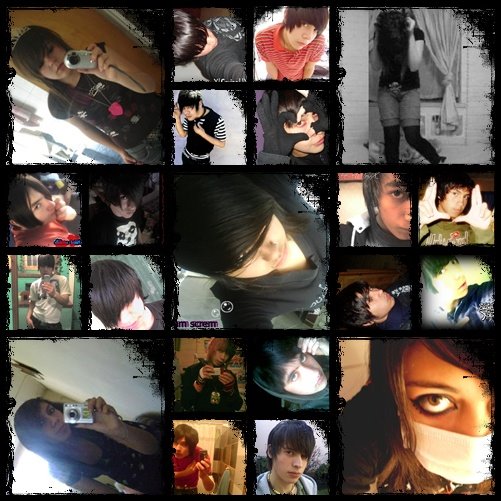| Can this 10 Second Trick Help Prevent YOUR Heart Attack? Bottom Line: 1 in 3 people die from Heart Disease.... so, unfortunately, there is a very good chance YOU will die of a heart attack. Luckily, there is a 10 Second Trick that can help prevent heart attacks. ==> 10 second trick helps PREVENT heart attacks When you watch this FREE presentation, you will discover the 10 Second Trick for preventing heart attacks - which, by-the-way, the Big Drug Companies would rather you didn't see. ==> 10 second trick helps PREVENT heart attacks WARNING: The following presentation contains controversial material, and a graphic representation of what it feels like to suffer a heart attack. While there is no profanity of any kind, viewer discretion is advised. |
If you'd prefer not to receive future emails, Unsubscribe Here.
OmegaK, Inc | 19239 N. Dale Mabry Hwy #148 |
Myocardial infarction (MI) or acute myocardial infarction (AMI), is the medical term for an event commonly known as a heart attack. It happens when blood stops flowing properly to part of the heart and the heart muscle is injured due to not getting enough oxygen. Usually this is because one of the coronary arteries that supplies blood to the heart develops a blockage due to an unstable buildup of cholesterol and fat and white blood cells. Typical symptoms of acute myocardial infarction include sudden retrosternal chest pain (typically radiating to the left arm or left side of the neck), shortness of breath, nausea, vomiting, palpitations, sweating, and anxiety (often described as a sense of impending doom).[1] Women may experience fewer typical symptoms than men, most commonly shortness of breath, weakness, a feeling of indigestion, and fatigue.[2] A sizeable proportion of myocardial infarctions (22���64%)[3] are "silent", that is without chest pain or other symptoms. A number of diagnostic tests are available to detect heart muscle damage including, an electrocardiogram (ECG), echocardiography, cardiac MRI and various blood tests. The most often used blood markers are the creatine kinase-MB (CK-MB) fraction and the troponin levels. Immediate treatment for suspected acute myocardial infarction includes oxygen, aspirin, and sublingual nitroglycerin.[4]
publication of defamatory statements against plaintiff.""We're calling their bluff," said Mawyer. "I would have thought this would have been dropped a while ago, but I guess they feel they have to defend themselves to their own members."Many of the books allegations are based on the claims of a former NYPD undercover informant who spent eight years posing as a member of the Muslim group, which has secretive bases in rural areas around the country, including Hancock, N.Y., and York County, S.C.- Martin Mawyer, founder of Christian Action NetworkThe book alleges organized criminal activity on the part of MOA and claims profits from street crimes, drugs, brothels, unemployment fraud and other offenses have been funneled to Jamaat al-Fuqra. Part of the money has been used to establish a series of Jihadi training camps on American soil, according to the book.Both Muslims of the Americas -- made up primarily of African-American converts to Islam -- and the Pakistan-based Jamaat al-Fuqra, are guided by Sheikh Mubarik Ali Gilani, a highly controversial cleric who lived in the U.S. during the 1980s and who was the subject of an investigation by the late Wall Street Journal journalist Daniel Pearl.In 2002, Pearl was in Pakistan on his way to a pre-arranged interview with Gilani when he was kidnapped by Al Qaeda and eventually beheaded in a brutal case that shocked the world. Gilani was questioned in relation to the investigation but released w
ines," Young said.Food manufacturers have added caffeine to candy, nuts and other snack foods in recent years. Jelly Belly "Extreme Sport Beans," for example, have 50 mg of caffeine in each 100-calorie pack, while Arma Energy Snx markets trail mix, chips and other products that have caffeine.Critics say it's not enough for the companies to say they are marketing the products to adults when the caffeine is added to items like candy that are attractive to children. Many of the energy foods are promoted with social media campaigns, another way they could be targeted to young people.Major medical associations have warned that too much caffeine can be dangerous for children, who have less ability to process the stimulant than adults. The American Academy of Pediatrics says it has been linked to harmful effects on young people's developing neurologic and cardiovascular systems."Could caffeinated macaroni and cheese or breakfast cereal be next?" said Michael Jacobson, director of the Center for Science in the Public Interest, which asked the FDA to look into the number of foods with added caffeine last year. "One serving of any of these foods isn't likely to harm anyone. The concern is that it will be increasingly easy to consume caffeine throughout the day, sometimes unwittingly, as companies add caffeine to candies, nuts, snacks and other foods.Taylor said the agency would look at the added caffeine in its totality -- while one product might

+los+amo+!!!.jpg)







No hay comentarios:
Publicar un comentario